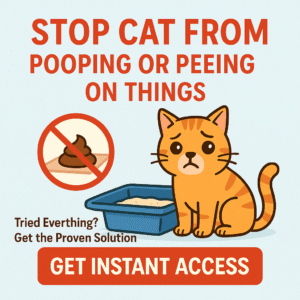Eosinophilic granuloma complex (EGC) can cause a range of frustrating and sometimes alarming symptoms in cats, from mouth ulcers to itchy skin lesions. While medical treatment is essential, nutrition and food choices can play a vital supporting role in reducing flare-ups, minimizing allergic reactions, and helping your cat heal. Here’s a practical guide for choosing the right diet for cats struggling with eosinophilic granuloma.
What is Eosinophilic Granuloma in Cats?
Eosinophilic granuloma complex is an umbrella term for a group of skin and mouth disorders triggered by an overreaction of a cat’s immune system. The most common forms include:
- Eosinophilic plaque: Raised, moist, red skin lesions, often found on the abdomen or thighs.
- Indolent ulcer: Sores or ulcers on the upper lip, sometimes called “rodent ulcers.”
- Eosinophilic granuloma: Firm, yellowish or pinkish swellings, sometimes on the back of the legs, mouth, or tongue.
Triggers for EGC are often allergic reactions—most commonly to fleas, environmental allergens, or food. Even stress or insect bites can be involved. Managing this complex condition usually requires both medical and dietary changes.
How Diet Impacts Eosinophilic Granuloma
Many cats with EGC have underlying food allergies or intolerances. In some cases, changing the diet can dramatically reduce symptoms and decrease the need for steroids or other medications. The key is to eliminate common allergens and feed a simple, gentle, and highly digestible diet.
- Elimination or hypoallergenic diets: Often, vets recommend a strict “elimination” diet—feeding a protein and carbohydrate your cat has never had before, for 8–12 weeks, to identify triggers.
- Limited-ingredient diets (LID): These contain as few ingredients as possible, lowering the chance of an allergic response.
- Novel or hydrolyzed proteins: Proteins your cat hasn’t eaten before (like rabbit, venison, duck, or kangaroo), or hydrolyzed proteins broken down so the immune system doesn’t react to them.
- No grains, dairy, eggs, or artificial additives: Many cats with EGC do best on diets free from common fillers and artificial colors or preservatives.
- High moisture (wet) foods: Canned food is gentler on the stomach, helps with hydration, and is often better accepted by cats with mouth lesions.
Best Cat Food Options for Eosinophilic Granuloma
1. Hill’s Prescription Diet z/d (Hydrolyzed Protein)
- Made with hydrolyzed chicken protein—ideal for cats with severe or multiple food allergies.
- Highly digestible and often recommended by veterinarians for elimination trials.
- Available in both wet and dry formulas.
2. Royal Canin Veterinary Diet Hydrolyzed Protein (Wet & Dry)
- Hydrolyzed soy protein helps prevent immune reactions to food.
- Often used for cats with chronic skin or mouth allergies.
- Requires a vet prescription.
3. Blue Buffalo Basics Limited Ingredient Diet (Wet)
- Uses novel proteins like duck or turkey with a short ingredient list.
- No wheat, dairy, eggs, soy, or artificial colors/preservatives.
- High in moisture for easy eating and better hydration.
4. Natural Balance L.I.D. (Wet or Dry)
- Simple, single-protein diets (like green pea & venison or duck & potato).
- No common fillers or irritants—good for trial diets or ongoing maintenance.
- Available in wet and dry.
5. Instinct Limited Ingredient Diet Grain-Free (Wet)
- Single animal protein (rabbit, turkey, or duck) and a minimal ingredient list.
- No grains, dairy, or eggs, making it a strong choice for sensitive cats.
- Gentle texture for cats with mouth discomfort.
How to Start a Food Trial for Eosinophilic Granuloma
- Consult your vet: Before starting, get a clear diagnosis and discuss which protein and carbohydrate sources your cat has never eaten before.
- Feed only the trial food: No treats, table scraps, flavored medications, or supplements—anything extra can spoil the results.
- Trial period: It can take 8–12 weeks to see clear improvement, especially if your cat has been on steroids or other medications.
- Monitor symptoms: Track any changes in skin, mouth, or behavior, and communicate regularly with your vet.
Practical Feeding Tips
- Warm wet food slightly: This makes it more palatable and easier for cats with mouth lesions.
- Feed small, frequent meals: Gentle on the stomach and may encourage reluctant eaters.
- Keep bowls clean: Prevent secondary infections by cleaning food and water dishes daily.
- Hydration matters: Offer plenty of fresh water, and consider adding extra water to wet food for cats reluctant to drink.
When to See the Vet
Any worsening of sores, swelling, drooling, trouble eating, or weight loss requires immediate veterinary attention. If you see no improvement after a full trial, your vet may recommend additional diagnostics, medications, or alternative diet trials.
The Bottom Line
While food alone cannot cure eosinophilic granuloma, a carefully chosen, hypoallergenic, and limited-ingredient diet can significantly reduce flare-ups and support long-term healing. Always work closely with your veterinarian, follow diet trials carefully, and give your cat the best chance at comfort and recovery.
This article is for informational purposes only. Eosinophilic granuloma is a medical condition—always consult your veterinarian for diagnosis, treatment, and specific dietary guidance.
